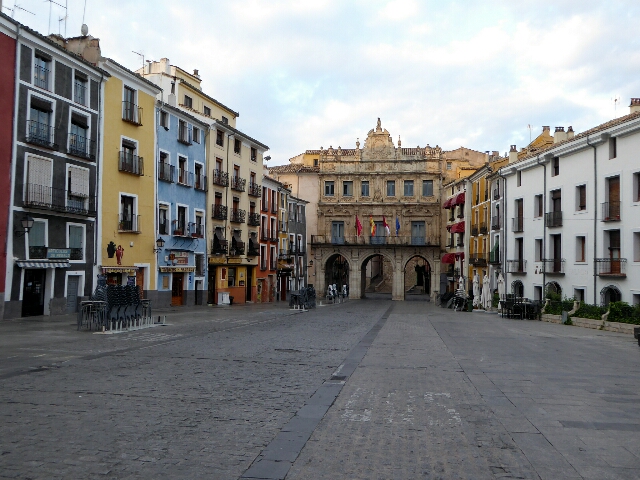Cuenca
Cuenca was occupied by the Moors from the 8th to 12th centuries. The casas colgadas (hanging houses) spectacularly cantilevered over the Huécar River far below are believed to have originated in those times. Now it's a World Heritage, well-preserved medieval city.
It's not just all "hanging houses" though, there are some fabulous walks in the surrounding mountains.
It's not just all "hanging houses" though, there are some fabulous walks in the surrounding mountains.
 |
| The "hanging houses" of Cuenca |
 |
| Cuenca - still a fortified medieval city |
 |
| Another view of Cuenca old town |
 |
| Coloured facades on the main street leading up to the historic area |
 |
| The 12th century Cathedral is the earliest example of Gothic style in Spain |
 |
| The Main Plaza with the City Hall (1762) at the end |
 |
| View from the terrace at our apartment San Martin |
 |
| Octagonal Church of San Pedro built on an ancient mosque |
 |
| The old Convent is now a hotel |
 |
| The original 16th century stone San Pablo bridge collapsed |
 |
| Dominican Monastery of San Pablo, 1523 |
 |
| 16th century Church of the Virgin of Light reflected in the Júcar |
 |
| Part of the 7k walk to the St Julian Chapel |
 |
| Rock formations above the path |
 |
| Bridge across the Huécar leads back up to the old city |
 |
| We're back in La Mancha, the world's largest vine-growing area |
 |
| Resolí is a tasty Cuenca liquor made with cinnamon, cloves and anise |